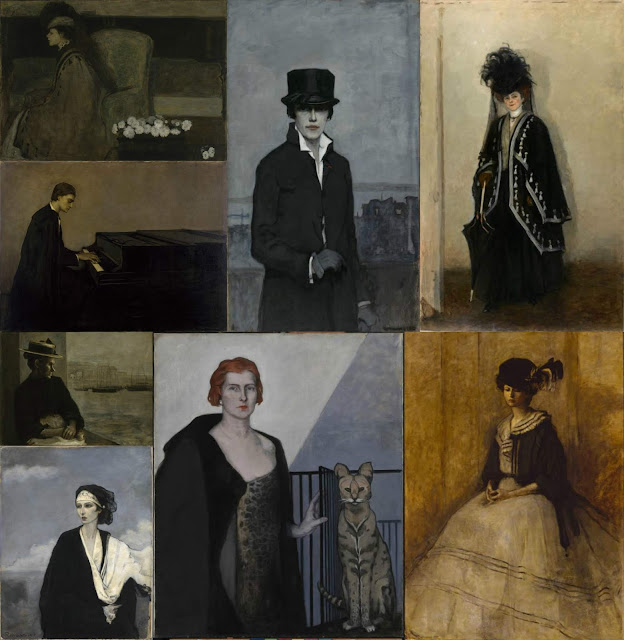To the Unnamed Artist: Native American Beadwork
Glass beads were a European import, but they have been a staple of Native American beadwork for over five centuries. Beads had previously been made using dried plants, shells, bones, and claws, but quillwork was more prevalent than beading. While the 20th century saw the expansion of Native American beadwork into the art market and therefore the rise of male artisans, beadwork traditionally was the product of female tribes-members. Beads adorned clothes, shoes, bags, souvenirs for tourists...anything made with hides could be beaded. While the designs in beadwork had important tribal meanings, much of the understanding of these symbols has been lost. However, European designs also crept into beadwork patterns, especially in souvenirs for tourists like the Iroquois hat (pictured) or the items featured in the University of Maine's Brilliantly Beaded exhibit (link below).
1. Sioux two-hide dress with fully beaded yoke, c. 1865, National Museum of the American Indian
2. Plains Indian Cradleboard, Gilcrease Museum
3. Cheyenne beaded buffalo hide moccasins, c. 1870, Gilcrease Museum
4. Patamona woman weaving a bead apron on a bow-loom, Beads and Beadwork of the American Indians by William C. Orchard, pg. 102, Smithsonian Libraries
5. Iroquois Niagara Beadwork Hat, c. 1870, The Huntington Library
6. Glass beads and fringing detail on a Blackfoot shirt, c. 1893, Pitt Rivers Museum
Links:2. Plains Indian Cradleboard, Gilcrease Museum
3. Cheyenne beaded buffalo hide moccasins, c. 1870, Gilcrease Museum
4. Patamona woman weaving a bead apron on a bow-loom, Beads and Beadwork of the American Indians by William C. Orchard, pg. 102, Smithsonian Libraries
5. Iroquois Niagara Beadwork Hat, c. 1870, The Huntington Library
6. Glass beads and fringing detail on a Blackfoot shirt, c. 1893, Pitt Rivers Museum
Bandolier Bag Collection from Milwaukee Public Museum
Brilliantly Beaded: Northeastern Native American Beadwork from University of Maine Hudson Museum
Collage generated using BeFunky
Collage generated using BeFunky



Comments